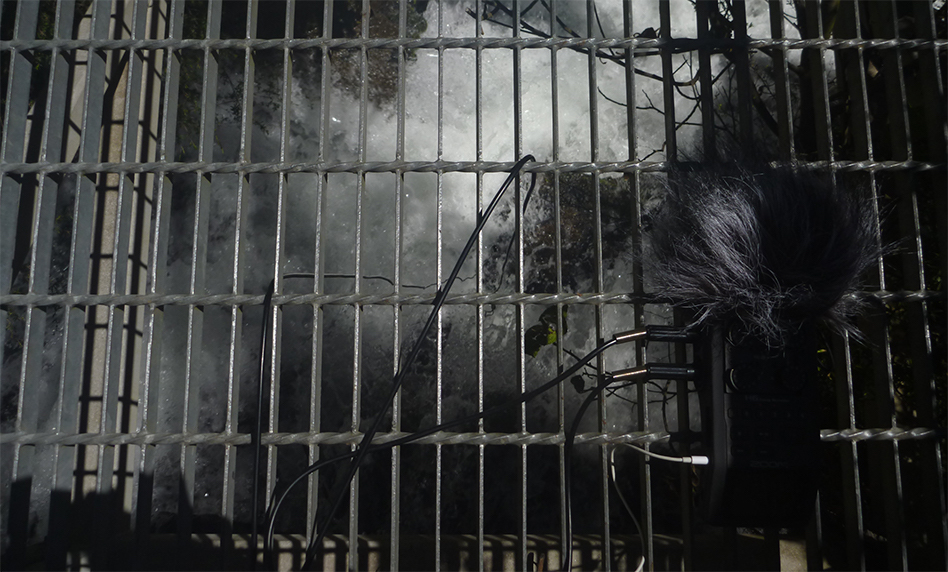(19.11.2021)
I have just returned from a hike out to Roper’s Hut and an 11 hour sleep. I enjoyed the break from the river’s blanketing drone. Up on the open plains the sound circles around you easily. I have continued taking time to actively listen, either walking or finding a resting spot.
Excerpts of my listening
“that heaviness – i like how my voice becomes muted, how you lose all sense of weather.”
“your breathing makes the world like a harmonica. sounding different on its way in and out.”
“a wheeze of cicadas” “can i hear the sun on my face or is that something else?”
“gentle breeze that rises up from somewhere deep, like those waves you think will be really big but by the time they reach you, you float over with ease.”
“distant tuning in the sky. closer becoming distortion”
“my plastic bag loves the attention from the wind”
“squeaking, delicate, sensational. sparkling without the sun.”
On Tuesday I walked out to Fainter Falls. I stopped on the bridge, dropping my hydrophones through the gaps to record the water jumping off rocks. When isolating the droplets, the multiple rhythms occurring in the river become clear. Once home, I attempted extracting these rhythms and possible pitches.
I have started wondering if the river is a series of bells. If you listen long enough you adjust to the noise and start hearing those individual voices. Each particle of water a bell resonating, constantly– rhythmic polyphonic drone. The bell links the river again to time – ”Etymologically, the Germanic word for Bell - Glocke, or Klok is tied to the word Clock. The bell conceals a matrix of time, space and labour in its mineral composition”1 – and therefore ritual. And we are now talking about architecture, containment, and structures – bell towers, the celesta, and compositional patterns.
Watching the waterfall I am reminded of weight and then physical heaviness that can be felt with music. Earlier in the week I recorded a vocal layering that emerges under a recording of the river trying to imitate that polyphonic drone. Though I am following western harmony I am trying to be looser and more wavering like the modulation of the river. Autotune helps – shifting my voice between pitches as it tries to decide the correct note. Mixing harmony with recontextualised noise creates a weight for me.
But I am also thinking about the importance of instrumentation. That the viola is another method of voicing for me. Though this does not mean it has to be the outcome. I am thinking now about the celesta. About leaving instrumentation open, always with the possibility to sing. We are “c[h]oral animals.”2 I have written in my notebook “something joyful in composition” – I can’t quite remember what I mean but I like it.
On Wednesday Carson answered my question – ”You do not have to travel to find the sea, for the traces of its ancient stands are everywhere about. Though you may be a thousand miles inland, you can easily find reminders that will reconstruct for the eye and ear of the mind the processions of its ghostly waves and the roar of its surf, far back in time.”2
I will continue circling with bells, time, heaviness, and ritual.
1 – Xenia Benivolski, The Sky’s Like a Bell—the Moon Is Its Tongue
2 – Rachel Carson, The Sea Around Us
